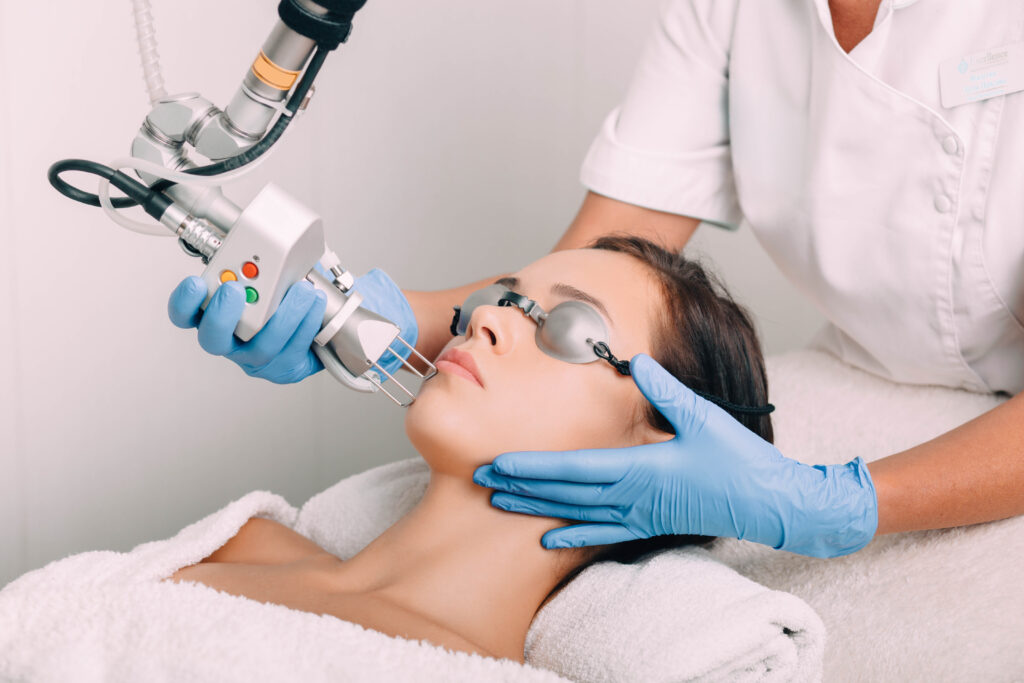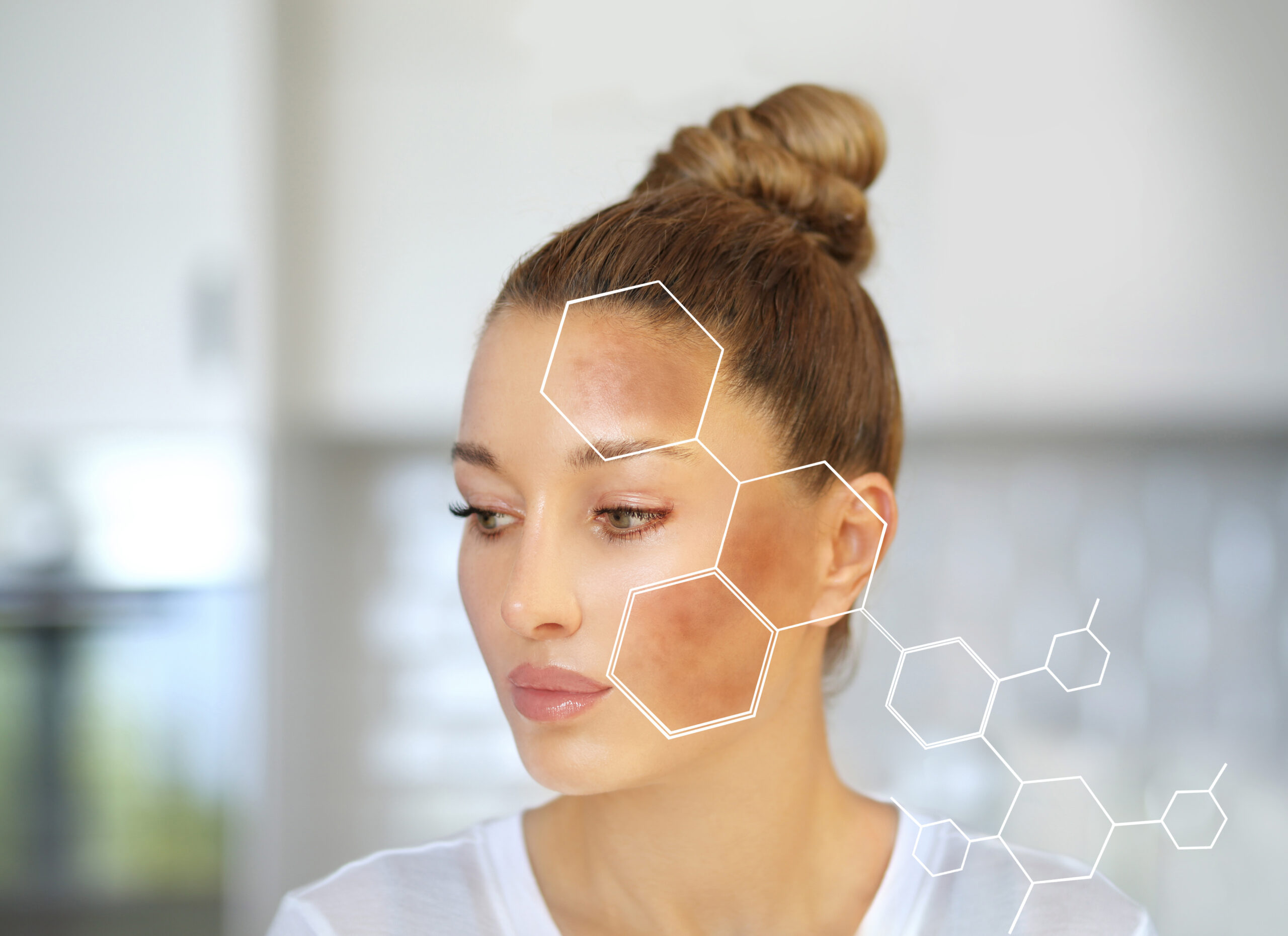In dermatology and cosmetic science, addressing the intricacies of skin pigmentation is a paramount concern for professionals and individuals. The quest for an even skin tone transcends mere aesthetic appeal, encompassing the broader implications of skin health and psychological well-being.
That said, this guide was meticulously crafted to serve as an authoritative resource on managing and treating skin pigmentation. It will evaluate the efficacy of contemporary treatment modalities, such as laser removal of pigmentation, and offer tips for preventative care.
Treatment Options
When addressing uneven skin tone and hyperpigmentation, a range of treatment options is available, spanning from over-the-counter products to professional dermatological procedures. Tailoring your approach based on the severity of the pigmentation, skin type, and underlying causes is essential. Here are several effective treatments:
Over-The-Counter (OTC) Treatments
- Topical Creams and Serums: Products containing ingredients like vitamin C, niacinamide, kojic acid, arbutin, and licorice root extract can help lighten hyperpigmentation by inhibiting melanin production.
- Retinoids: Available in various strengths, retinoids can accelerate cell turnover, fade dark spots, and improve overall skin texture.
- Sunscreen: Regular use of broad-spectrum sunscreen prevents existing pigmentation from becoming darker and protects against new damage.
Prescription Treatments
- Hydroquinone: Hydroquinone is a potent skin-lightening agent that works by decreasing the number of melanocytes present. Because of its strength, hydroquinone is available in concentrations higher than 2% only with a prescription. It’s often considered the gold standard for treating hyperpigmentation.
- Tretinoin: Tretinoin, a stronger retinoid available by prescription, accelerates cell turnover at a more rapid pace compared to its OTC counterparts. This makes it highly effective in treating severe hyperpigmentation and improving skin texture. It is frequently used in combination with other treatments, such as hydroquinone, for enhanced effects.
Professional Dermatological Treatments
- Chemical Peels: Chemical peels involve the application of a chemical solution that removes the top layer of the skin, leading to the peeling from the old, pigmented skin layer. This reveals the newer, less pigmented skin underneath and can significantly improve the skin’s appearance.
- Laser Therapy: Laser treatments utilize concentrated light energy to target and break down melanin pigment in the skin without harming the surrounding tissue. These treatments are exact and can be tailored to the specific type of pigmentation issue, skin type, and color.
- Microdermabrasion: Microdermabrasion is a less invasive procedure that sands away the skin’s top layer using a special applicator with an abrasive surface. This technique is effective in improving the appearance of sun damage, scars, and dark spots by promoting the growth of new, more evenly pigmented skin.
- Microneedling: Microneedling uses fine needles to make small perforations in the skin. This technique triggers the skin’s innate healing mechanisms, leading to a boost in collagen and elastin synthesis. When used alongside topical agents, this method can significantly improve the penetration and effectiveness of products aimed at lightening the skin.

Strategies For Managing And Improving Skin Pigmentation
Managing and improving skin pigmentation requires a multifaceted approach that includes skincare routines, lifestyle changes, and possibly medical treatments. Here are essential tips to help address skin pigmentation issues effectively:
- Prioritize Sun Protection
The harmful rays of the sun can exacerbate hyperpigmentation by stimulating the overproduction of melanin. To safeguard your skin, apply a broad-spectrum sunscreen with a minimum SPF of 30 every day, regardless of the weather conditions. Sunscreen should be reapplied every two hours, especially after swimming or sweating, to ensure continuous protection.
- Incorporate Antioxidants In Your Skincare
Antioxidants play a pivotal role in combating skin pigmentation. They work by neutralizing free radicals, which can damage skin cells and contribute to melanin overproduction. Incorporating skincare products that are rich in antioxidants like vitamin C, vitamin E, and ferulic acid into your daily routine can significantly brighten the skin and diminish the appearance of dark spots.
- Use Skin Brightening Ingredients
Employing products infused with skin-brightening ingredients is crucial in reducing hyperpigmentation. Niacinamide, kojic acid, licorice root extract, and arbutin are among the most effective compounds for lightening dark spots and evening out skin tone.
- Regularly Exfoliate
Exfoliation is essential for removing dead skin cells that can dull the complexion and exacerbate the appearance of pigmentation. By sloughing away the top layer of dead skin, exfoliating products allow for better penetration of brightening treatments, making them more effective. Products containing alpha-hydroxy acids (AHAs), like glycolic acid, are excellent for gentle exfoliation, while beta-hydroxy acids (BHAs), like salicylic acid, are beneficial for acne-prone skin.
- Stay Hydrated
Hydration is fundamental to maintaining healthy, vibrant skin. Well-hydrated skin is more pliable, less prone to flakiness, and better equipped to repair itself, which can indirectly aid in reducing the visibility of pigmentation. Drinking enough water throughout the day helps keep the skin hydrated from the inside out.
- Adopt A Healthy Diet
A nutrient-rich diet plays a significant role in skin health. Foods high in antioxidants, such as berries, nuts, green leafy vegetables, and fatty fish rich in Omega-3 fatty acids, can protect the skin from damage and support its natural repair mechanisms. These nutrients can also inhibit the processes that lead to excess melanin production, thereby preventing the formation of dark spots.
- Consider Professional Treatments
Professional treatments may be necessary for those with more pronounced pigmentation issues to achieve significant improvements. These treatments work by removing the outer layers of the skin or disrupting the pigment-producing cells, leading to a reduction in pigmentation. It’s essential to consult with a skincare professional to determine the most suitable treatment for your skin type and pigmentation concerns.
Conclusion
As you navigate through these strategies, remember that the goal is not just aesthetic improvement but also fostering healthier, more resilient skin. With time and dedication, the quest for an even skin tone can lead to lasting changes that go beyond the surface, reflecting the inner health and vitality of your skin.
You might also like
/Hyaluronic Acid Shot and Skincare | Review
